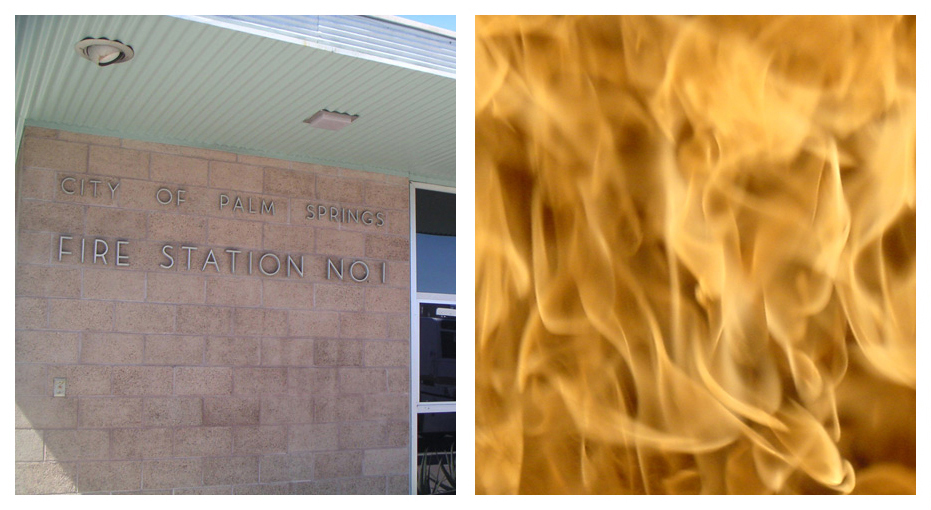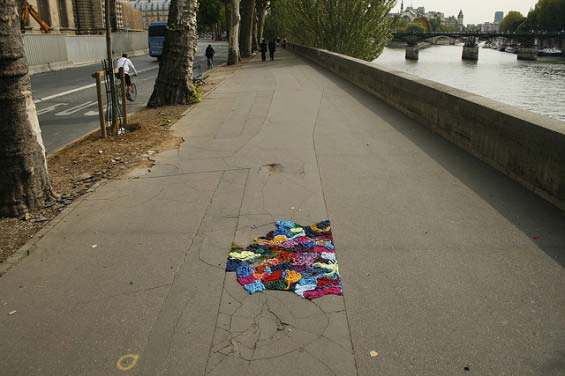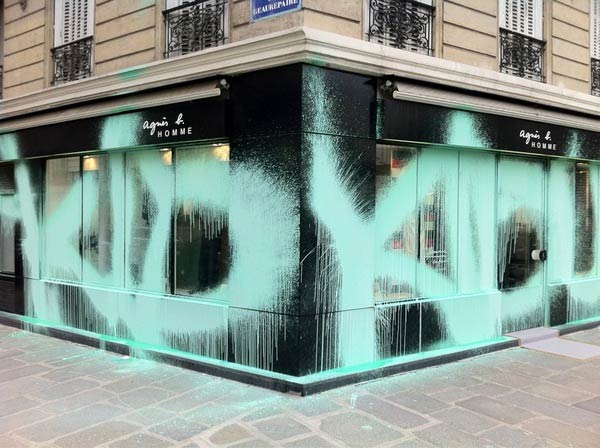paris
The arrival of driverless cars could help us reduce light pollution
During the period known as the High Middle Ages, between 1100-1250, the Catholic Church built over 1400 Gothic churches in the Paris Basin alone. […]
This thesis examines the implicit costs of building the Gothic churches of the Paris Basin built between 1100-1250, and attempts to estimate the percentage of the regional economy that was devoted to build them.
I estimate that over this 150-year period, on average, 21.5 percent of the regional economy was devoted to the construction of these Gothic churches, 1.5 percent of which is directly related to the implicit cost of labor.
While my JVC vibrates the concrete

I have itemized data for a single line in New York (Second Avenue Subway Phase 1) and a single line in Paris (Metro Line 1 extension), from which I have the following costs:
Tunneling: about $150 million per km vs. $90 million, a factor of 1.7
Stations: about $750 million per station vs. $110 million, a factor of 6.5
Systems: about $110 million per km vs. $35 million, a factor of 3.2
Overheads and design: 27% of total cost vs. 15%, which works out to a factor of about 11 per km or a factor of 7 per station
[…]
In Paris, as well as Athens, Madrid, Mexico City, Caracas, Santiago, Copenhagen, Budapest, and I imagine other cities for which I can’t find this information, metro stations are built cut-and-cover. While the tunnels between stations are bored, at higher cost than opening up the entire street, the stations themselves are dug top-down. This allows transporting construction materials from the top of the dig, right where they are needed, as well as easier access by the workers and removal of dirt and rock. There is extensive street disruption, for about 18 months in the case of Paris, but the merchants and residents get a subway station at the end of the works.
In contrast, in New York, to prevent street disruption, Second Avenue Subway did not use any cut-and-cover. The tunnels between stations were bored, as in nearly all other cities in the world that build subways, and the stations were mined from within the bore, with just small vertical shafts for access. The result was a disaster: the costs exploded, as can be seen in the above comparison, and instead of 18 months of station box-size disruption, there were 5 years of city block-size disruption, narrowing sidewalks to just 2 meters (7′ to be exact).
pencil, ink, and enamel on tracing paper { Elena Asins, Scale, 1982-1983 }
No more shines, Billy

On a Sunday night in May 1935, Victor Lustig was strolling down Broadway on New York’s Upper West Side. At first, the Secret Service agents couldn’t be sure it was him. They’d been shadowing him for seven months, painstakingly trying to learn more about this mysterious and dapper man, but his newly grown mustache had thrown them off momentarily. As he turned up the velvet collar on his Chesterfield coat and quickened his pace, the agents swooped in. […]
Secret Service agents finally had one of the world’s greatest imposters, wanted throughout Europe as well as in the United States. He’d amassed a fortune in schemes that were so grand and outlandish, few thought any of his victims could ever be so gullible. He’d sold the Eiffel Tower to a French scrap-metal dealer. He’d sold a “money box” to countless greedy victims who believed that Lustig’s contraption was capable of printing perfectly replicated $100 bills. (Police noted that some “smart” New York gamblers had paid $46,000 for one.) He had even duped some of the wealthiest and most dangerous mobsters—men like Al Capone, who never knew he’d been swindled.
Now the authorities were eager to question him about all of these activities, plus his possible role in several recent murders in New York and the shooting of Jack “Legs” Diamond, who was staying in a hotel room down the hall from Lustig’s on the night he was attacked.
Un tapis-franc, en argot de vol et de meurtre, signifie un estaminet ou un cabaret du plus bas étage. Un repris de justice, qui, dans cette langue immonde, s’appelle un ogre, ou une femme de même dégradation, qui s’appelle une ogresse, tiennent ordinairement ces tavernes, hantées par le rebut de la population parisienne ; forçats libérés, escrocs, voleurs, assassins y abondent.

…a bizarre affliction that has been widely reported in the media to affect around a dozen of the approximately one million Japanese tourists who visit Paris each year. Paris Syndrome is said to occur when a combination of factors leave tourists with a particularly severe case of culture shock.
Symptoms are purported to include:
acute delusional states, hallucinations, feelings of persecution (perceptions of being a victim of prejudice, aggression, or hostility from others), derealization, depersonalization, anxiety, and also psychosomatic manifestations such as dizziness, tachycardia (and) sweating
photo { Iiu Susiraja }
The most kissed face of all time

{ L’Inconnue de la Seine (French for the unknown woman of the Seine) was an unidentified young woman whose death mask became a popular fixture on the walls of artists’ homes after 1900. Her body was pulled out of the Seine River in Paris around the late 1880s. A pathologist at the Paris morgue was so taken by her beauty that he had a molder make a plaster cast death mask of her face. The mask was used for the head of the first aid mannequin Rescue Annie, created by Peter Safar and Asmund Laerdal in 1958 and used in numerous CPR courses. Her face has been called by some “the most kissed face” of all time. | Wikipedia | Continue reading }
Lick my legs, I’m on fire

photo { Thomas Lélu }
Come up, Kinch. Come up, you fearful jesuit.
Sylvia Beach (1887 - 1962) was an American-born bookseller and publisher who lived most of her life in Paris. (…)
Beach dreamed of starting a branch of Monnier’s book shop in New York that would offer contemporary French works to American readers. Since her only capital was USD$3,000 which her mother gave her from her savings, Beach could not afford such a venture in New York. However, Paris rents were much cheaper and the exchange rates favorable, so with Monnier’s help, Beach opened an English language bookstore and lending library that she named Shakespeare and Company. Four years beforehand, Monnier had been among the first women in France to found her own bookstore. Beach’s bookstore was located at 8 rue Dupuytren in the 6th arrondissement of Paris.
Shakespeare and Company quickly attracted both French and American readers - including a number of aspiring writers to whom Beach offered hospitality and encouragement as well as books. As the franc dropped in value and the favorable exchange rate attracted a huge influx of Americans, Beach’s shop flourished and soon needed more space. In May 1921, Shakespeare and Company moved to 12 rue de l’Odéon.
Shakespeare and Company gained considerable fame after it published James Joyce’s Ulysses in 1922, as a result of Joyce’s inability to get an edition out in English-speaking countries. Beach would later be financially stranded when Joyce signed on with another publisher, leaving Beach in debt after bankrolling, and suffering severe losses from the publication of Ulysses.











